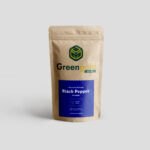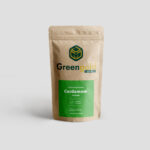Cardamom is a luxurious spice known for its aromatic flavor and medicinal benefits. While it’s typically grown in the high-altitude rainforests of Idukki, you can cultivate cardamom at home with the right care! 🌱🏡
Follow this step-by-step guide to grow your own fresh, flavorful cardamom plants at home! 💚
🏡 Step 1: Choose the Right Growing Conditions
✅ Cardamom thrives in warm, humid climates with partial shade.
✅ Ideal temperature: 10°C – 35°C (50°F – 95°F).
✅ Needs rich, well-draining soil with a pH between 5.5 – 6.5.
✅ Requires plenty of moisture but no waterlogging.
💡 Tip: If you live in a dry region, grow cardamom indoors or in a greenhouse to maintain humidity. 🌱🌿
🌰 Step 2: Select High-Quality Cardamom Seeds or Saplings
✅ Use fresh, organic cardamom seeds or buy a healthy plant from a nursery.
✅ Seeds should be dark brown and fully matured for the best germination results.
💡 Tip: Soak seeds in warm water overnight before planting to improve germination! 🌊🌱
🏺 Step 3: Prepare the Planting Medium
✅ Use rich, loamy soil with added organic compost or coconut coir.
✅ If growing in a pot, choose a deep container (at least 12 inches) with good drainage.
✅ Maintain consistent moisture in the soil.
💡 Tip: Mix in cow dung or compost for better nutrition and plant growth! 🌿✨
🌱 Step 4: Planting the Seeds or Saplings
✅ For seeds: Sow them ½ inch deep in the soil and cover lightly.
✅ For saplings: Transplant into pots or a garden bed with 2-3 feet spacing.
✅ Keep in a warm, shaded area with indirect sunlight.
💡 Tip: Mist the soil lightly to keep it moist but not soggy! 💦🌿
💧 Step 5: Watering & Humidity Control
✅ Cardamom requires consistent moisture, but avoid overwatering.
✅ Keep humidity levels above 50% for proper growth.
✅ Mist leaves regularly if grown indoors.
💡 Tip: Use a humidity tray or place plants near other tropical plants to increase moisture! 🌧️🌿
🌞 Step 6: Providing the Right Light & Shade
✅ Cardamom plants thrive under filtered sunlight or partial shade.
✅ Avoid direct sun exposure, which can scorch the leaves.
✅ If indoors, place near a bright window with indirect light.
💡 Tip: Plant near banana trees or taller plants for natural shade! 🍌🌳
🌿 Step 7: Fertilizing & Mulching for Healthy Growth
✅ Use organic compost, cow dung, or vermicompost every month.
✅ Mulch with dried leaves or coconut husk to retain soil moisture.
✅ Avoid chemical fertilizers, as they can affect flavor.
💡 Tip: Add a pinch of wood ash for natural pest control and healthy roots! 🔥🌱
✂️ Step 8: Pruning & Maintenance
✅ Remove dead or yellowing leaves to encourage new growth.
✅ Keep the plant clean and pest-free.
✅ Hand-pollinate if growing indoors to increase pod production.
💡 Tip: Shake the flowers gently to help with natural pollination! 🐝🌸
🌾 Step 9: Harvesting Cardamom Pods
✅ Cardamom plants take 2-3 years to start producing pods.
✅ Harvest when the pods turn green and firm (before they dry out).
✅ Dry the pods under shade to retain their aroma.
💡 Tip: Store dried cardamom in airtight containers for maximum freshness! 🏺🌿
🛒 Get Premium Idukki Cardamom for Planting & Cooking!
For high-quality seeds and flavorful spice, choose hand-picked Idukki cardamom! 🌿✨
👉 Shop Now 🛍️💚
🌟 Conclusion
Growing cardamom at home requires patience, care, and the right environment, but the reward is fresh, organic cardamom straight from your garden! 🌿🔥












